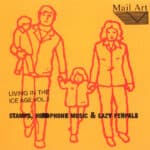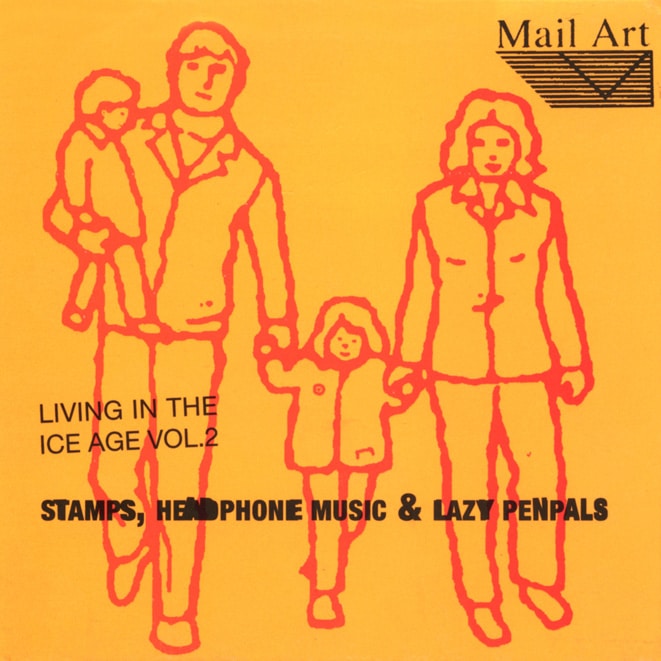After the first volume of “Living In The Ice Age”, Stefano Ghittoni compiles the 2nd chapter of this series with great refinement. It moves from downbeat to jazz and psychedelic blues’ suggestion, recouping and proposing some unreleased and alternative tracks.
The special packaging includes 40 original stamps of young artists. Correspondence art or mail art, as it is internationally best known, is an artistic phenomenon of planetary dimension, founded on the sharing of experiences on a level of equality and on the direct and free exchange of any kind of creation of the intellect that can be transmitted through the postal system (not only creative stamps, postcards and letters then, but also packages with publications, tri dimensional works, audiocassettes, videos, etc.). With the passing years mail art has taken the configuration of a proper network in continuous transformation, constituted by thousands of people in every corner of the world who, to the impersonal and alienating one-way communication of the mass media and to the often perverse mechanisms of the art critique and market, preferred the intimate and disinterested two-way contact that can be gained through a simple and inexpensive medium like the normal correspondence (and today also through fax or via computer).
This networking activity draws inspiration from a pragmatic philosophy of inclusive and anti-elitist orientation, aimed towards the dismantlement of all the barriers between the Artist (with a capital A) and the non-artist, art and life. Mail art is not so much a school or artistic l movement as a different communication strategy, a free practice open to all, with no qualification or membership card requested, that involves people of all ages and social conditions (professional artists, students, beginners, simple curious onlookers…) and that changes its aspect and characteristics with the passing years, without ever losing sight of its main reason of existence: to allow for an extended aesthetical communication. If the personal and private contact, without any commercial purpose or publishing and exhibitory intent, is the ambit where mail art first grew in size, in its purest form, it is equally true that really few among the regular frequenters of the postal network could resist, sooner or later, to the temptation of acquainting a larger number of people with their own experiences, through collective projects, shows, catalogues, essays or other public actions.
The mail art phenomenon then developed itself on various fronts, on one side as a social experiment in extended communication, significant forerunner of the “network culture” made possible today by the Internet (as well as of the punk do-it-yourself ethics), and on the opposite side as a continuation of various postal experiences of the historical avant-gardes and as a fellow-traveller of those intermediate trends that, starting from the Sixties, did foresee an always closer interaction between the artist, the artwork and the public (happenings, environments, performance art, street art, etc.).




